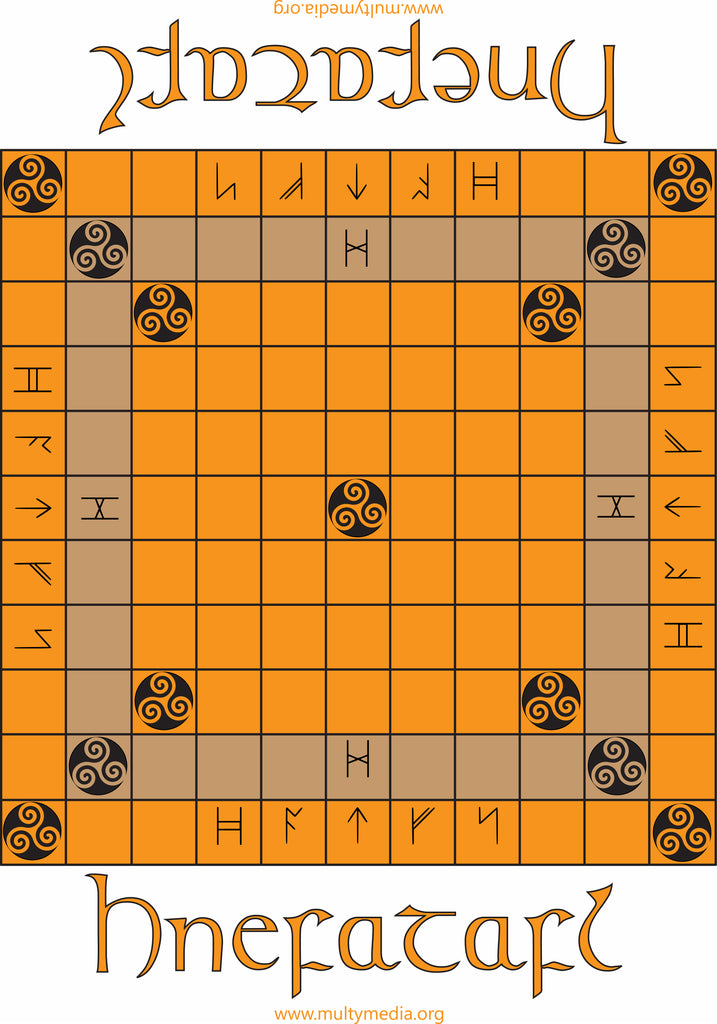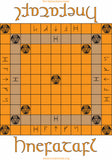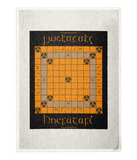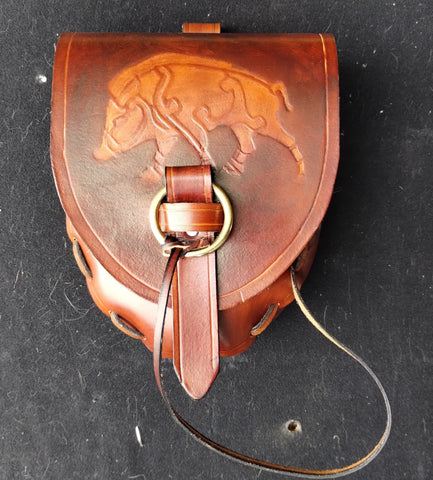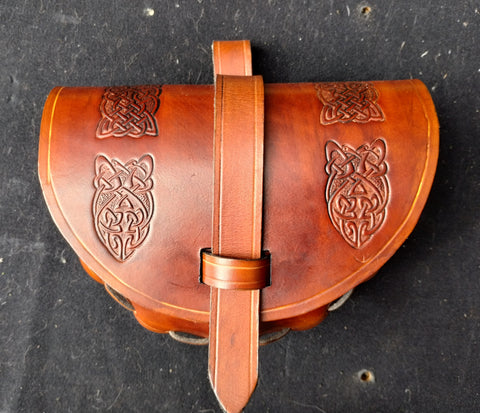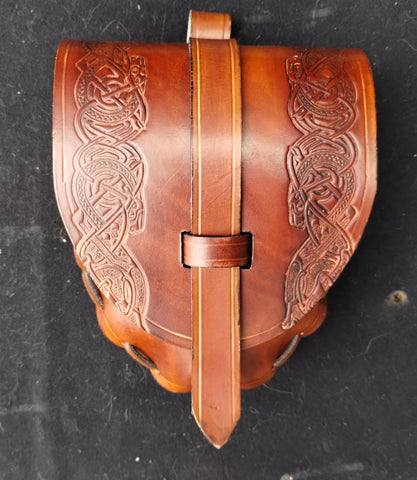Play Hnefatafl, the ancient Viking Board game.
Comes with a printed cloth board, a set of rules and a set of 24 of dark leather pieces and a king with 12 tan leather pieces
Norse adventurers began to set out from their homelands in the eighth century, on voyages of trade, pillage and settlement. The game of hnefatafl was by this time fully formed, and went with them over land and sea. Its enjoyment was not restricted to Scandinavians, as the game was adopted by other people who they came into contact with, such as Anglo-Saxons and Celts. The term tafl (Old Norse: "table" or "board") is the original Norse name of the game. Hnefatafl became the preferred term for the game in Scandinavia by the end of the Viking Age, to distinguish it from other board games, such as Skáktafl (chess), Kvatrutafl (Tables) and Halatafl (Fox games), as these became known. The specific name Hnefatafl possibly arose as meaning "board game of the fist", from hnefi ("fist") + tafl, where "fist" referred to the central king-piece. The precise etymology is not entirely certain but hnefi certainly referred to the king-piece, and several sources refer to Hnefatafl as "King's table"
Rules
The game is one of pure strategy, played on a square board. A king and a small force of defenders occupy the centre of the board. A larger force of attackers, twice as numerous as the defenders, occupy positions around the edge of the board.
The objective of the king is to escape to the periphery of the board, while the objective of the attackers is to capture the king, preventing his escape. The pieces move orthogonally, like rooks in chess, and capture is by surrounding a piece on two opposite sides.
There are minor variations on these rules, as the game was spread across northern Europe in an age before the printing and mass communication necessary for international standardisation. Each community developed its own "house rules", and used a board and pieces appropriate to the materials they had to hand.
The game is one of pure strategy, played on a square board. A king and a small force of defenders occupy the centre of the board. A larger force of attackers, twice as numerous as the defenders, occupy positions around the edge of the board.
The objective of the king is to escape to the periphery of the board, while the objective of the attackers is to capture the king, preventing his escape. The pieces move orthogonally, like rooks in chess, and capture is by surrounding a piece on two opposite sides.
There are minor variations on these rules, as the game was spread across northern Europe in an age before the printing and mass communication necessary for international standardisation. Each community developed its own "house rules", and used a board and pieces appropriate to the materials they had to hand.

